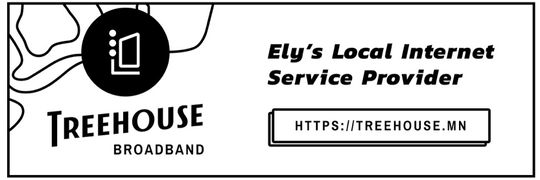Taconite production taxes paid by Iron Range mining companies have been utilized in many ways over the years to benefit northeastern Minnesota communities and residents.
The taconite production tax could again pave the way for another initiative— an increase in the Taconite Homestead Credit to homeowners and farmers within the Taconite Relief Area.
As proposed by Rep. Dave Lislegard, DFL-Aurora and Sen. Grant Hauschild, DFL-Hermantown, eligible homeowners and farmers within the Taconite Relief Area would beginning in 2025 receive an increase of $200 per year in the Taconite Homestead Credit portion of their property tax statements.
Lislegard says there’s currently enough money in the Taconite Property Tax Relief Fund to pay for the increase.
“We have confirmed with the Minnesota House of Representatives non-partisan Fiscal Analysts and House Counsel after their consultation with the Minnesota Department of Revenue that there is adequate funds in the Taconite Property Tax Relief Fund in FY 2025, 2026 and 2027 to increase the Taconite Residential Credit to $515,” Lislegard said in a text message.
“In fact, projections indicate the fund will have a positive balance of $2 million in FY 2027 even after this increase in benefits to the homeowners on the Iron Range. We were prepared, in case of a shortfall, to place up to 10 cents per taxable ton in the fund. However, that is no longer needed.”
Republican lawmakers on the Iron Range say tax relief is needed on the Iron Range and throughout Minnesota.
But they’re concerned that Taconite Property Tax Relief Fund won’t have enough money to pay for the proposed increase in Taconite Homestead Credit.
“We know that folks on the Iron Range and across the state need tax relief,” Sen. Rob Farnsworth, R-Hibbing, Sen. Justin Eichorn, R-Grand Rapids, Rep. Roger Skraba, R-Ely, Rep. Spencer Igo, R-Wabana Township, and Rep. Ben Davis, R-Merrifield, said in a joint statement. “We all see our property taxes skyrocketing, which leaves less in our family budgets for things like food and gas. Last year, Democrats had a $19 billion opportunity to provide real tax relief, Instead they spent it and raised taxes an additional $10 billion. While well intentioned, this bill was drafted with some problems. The property tax relief fund doesn’t have the funds to cover this proposal in its current form, and would require a shift to funding from the Douglas J. Johnson Fund as a stopgap if the math doesn’t add up, which it doesn’t. A more deliberate approach that included the entire Iron Range delegation would have been more productive in avoiding these problems.”
Iron Range area Republicans said they last year sought tax relief in a number of areas, but were overruled by Democratic Farmer-Labor majorities.
“Last year, we voted for more than $12 billion in tax cuts to seniors’ social security, property taxes, parents, income taxes for the lowest-wage earners and significant one-time rebates because people need real relief, not election year gimmicks,” they said. “There is a way to provide property tax relief, but it needs more serious and bipartisan work.”
A portion of the Taconite Production Tax paid each year by Iron Range mining companies goes into the Taconite Property Tax Relief Fund.
Each year, depending on the level of iron ore pellet production, the amount varies that goes into the fund.
Increasing the credit by $200 per homeowner would cost the Taconite Property Tax Relief Fund an additional $3.25 million in fiscal year 2025, according to legislative analysts.
After 2025, the increase would cost about $7 million more per year, according to analysts.
After 2027, the Taconite Property Tax Relief Fund would still have a surplus of $2 million, Lislegard said.
For calendar year 2024, 42.6 cents per ton from the $3.25.9 per ton production tax goes into the fund.
The fund in recent years has paid out almost as much as what has been deposited into the fund.
As an example, in 2022, $11.9 million was deposited into the fund and $11.2 million was paid out, according to the Minnesota Department of Revenue.
In 2021, $13.1 million went into the fund and $11.2 million was paid out.
The Taconite Property Tax Relief Fund as of Dec. 31, 2022, had a balance of just over $9.3 million, according to the Minnesota Department of Revenue.
Hauschild said he and Lislegard planned to request a transfer of an additional 10 cents per ton into the property tax fund, if needed, to cover the increased homestead property tax relief cost.
The 10 cents would have come from Iron Range Resources and Rehabilitation funds that also receive money from the production tax.
An escalator which automatically raises the Taconite Production Tax each year unless frozen by the legislature, could also be used if needed to help cover the increased homestead property tax relief funding, Hauschild said.
In the event the increased property tax relief can’t be covered by the Taconite Property Tax Relief Fund, the Douglas J. Johnson Economic Protection Trust (DJJ) Fund acts as a backstop. The DJJ fund, which currently has a balance of about $211.6 million, also receives a portion of the production tax each year.
The DJJ fund is overseen by the Minnesota Department of Iron Range Resources and Rehabilitation.
The DJJ fund is designed to support major economic development projects.
In past years, surpluses in the Taconite Property Tax Relief Fund have been tapped for other uses.
In 2003, 2010, 2013 and 2015, the Taconite Property Tax Relief Fund was utilized by the Iron Range Resources and Rehabilitation Board to help fund public works projects along with economic development projects within the agency’s 13,000 squaremile service area.
Taconite production taxes have also been utilized for other initiatives such as supporting construction of new schools.
Lislegard’s and Hauschild’s homestead property tax relief legislation still needs to be approved by the full legislature.
“We are pleased that the people of the Iron Range can directly receive increased benefits from taconite taxes by reducing their property taxes over the long-term if our proposal passes the legislature,” Lislegard said. “The people deserve it as it has not been raised since 1998.”
In 2024, about $122.6 million in taconite production taxes paid by Iron Range mining companies will be distributed to cities, townships, counties, school districts, Iron Range Resources and Rehabilitation, for property tax relief and into other accounts for use within the Taconite Relief Area of northeastern Minnesota, according to the Minnesota Department of Revenue.
Hauschild said increasing property tax aid to homeowners and farmers is a worthwhile idea.
“They deserve it, it’s a pretty cool idea,” Hauschild said. “It hasn’t been increased for decades despite property valuations, inflation, etc.”
.jpg)









